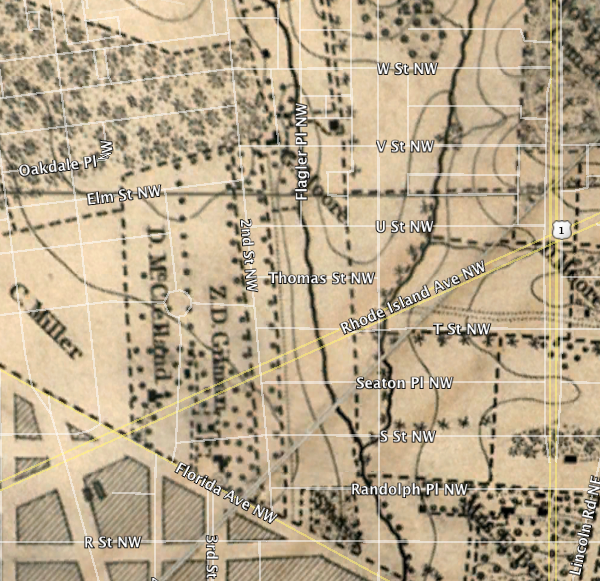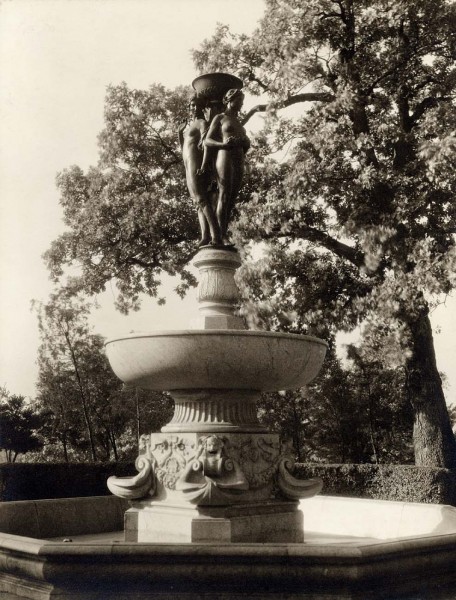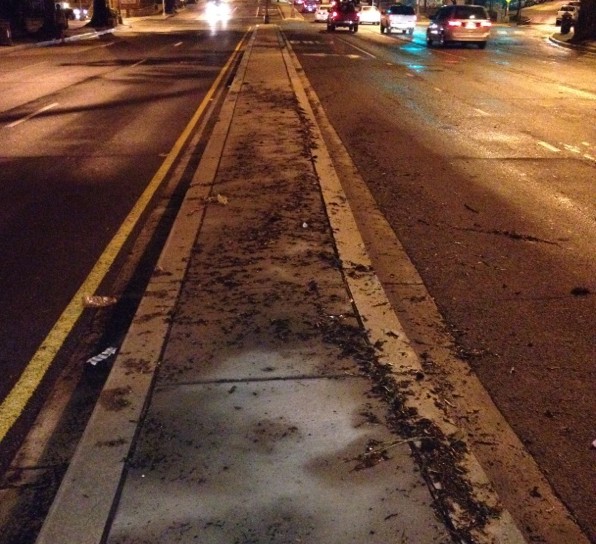Watch a film about the flooding of 2012
The National Geographic Society is sponsoring a free film screening and discussion about the street and basement flooding that afflicted parts of Bloomingdale and LeDroit Park in 2012. The film, Neighbor to Neighbor: The Bloomingdale Story, will be shown on Thursday, May 21 from 7 to 9 pm at St. George’s Episcopal Church (2nd & U Streets).
Here’s the full description from the flyer:
In September 2012 Bloomingdale was hit by one of the severest storms in recent memory. As Mike Thomas’ home flooded, neighbors—from different backgrounds and walks of life— came together to help him recover from the storm. This film tells that story.
Why Attend: Storms are hitting the District at an ever-increasing rate. In addition to infrastructure problems, weather crises due to climate change are on the rise: flash floods, severe freezes and snowstorms, and intense heat waves.
Katrina and the Chicago Heat Wave taught us that knowing your neighbors is one of the best predictors of survival. We know that communities with the strongest social connections are also the most resilient (able to bounce back from a challenge).
Bloomingdale, LeDroit Park, and the Southwest Waterfront are on the front line of critical weather events. Come see this insightful short film, share some food (provided), conversation, and wisdom about human connections and the resilience of our neighborhoods. The director of the film, Steve Droter, and Mike Thomas will be available to participate in the conversation.
This screening is funded in part by the National Geographic Climate and Urban System Partnership (CUSP).
Photo: A drop shaft in Bloomingdale for the tunnel boring machine that will drill a stormwater retention tunnel under First Street in Bloomingdale. The tunnel is expected to resolve flooding problems for good.
McMillan Fountain ready for its close-up
As part of DC Water’s construction work on the First Street Tunnel, the agency paved a temporary parking lot on the grounds of the McMillan Reservoir. Community leaders took a tour of the tunnel project on Saturday and got a close-up photo of the top of the McMillan Fountain, which stands just beyond the parking lot fence.
The base of the fountain, pictured below as it originally stood, lies dismantled in Fort Washington National Park in Prince George’s County.
Video from the mayor’s presser on recent flooding
The mayor’s news conference on the establishment of an anti-flooding task force drew a lot of media attention. All the local affiliates covered it:
- NBC 4 (WRC) – video below
- FOX 5 (WTTG) – video below
- ABC 7 (WJLA) – video below
- Channel 9 (WUSA)
Watch the videos below.
Read the rest of this entry »
Mayor Gray announces a task force to address area flooding
Later this morning, Mayor Vincent Gray, Councilmember Kenyan McDuffie (D – Ward 5), and representatives from DC Water and District agencies, will announce the creation of a task force to address the flooding that has occurred in numerous basements in LeDroit Park and Bloomingdale since July.
The mayor and councilmember will hold the press conference today at 11:30 am at the park at triangle park at First Street and Florida Avenue NW.
During several downpours in July, the overtaxed sewers below Florida Avenue in LeDroit Park and below several streets in Bloomingdale backed up into residents’ basements.
DC Water, the semi-independent agency that manages the drinking water and sewer infrastructure, says the completion of new diversion sewer tunnels in 2025 will solve the problem for good. Waiting 13 years is little consolation for residents whose basements have flooded with diluted sewage.
Video: Bloomingdalers upset about recurring flooding
Channel 4 has a short segment on Tuesday night’s flooding in Bloomingdale and LeDroit Park. The Post also has a story describing the sewage-drenched nightmare that struck many residents’ basements.
DC Water, which is responsible for the water pipes and sewers, left the following note in the comments section of yesterday’s post on the flooding:
Neighbors,
We’ve received a number of phone calls, tweets and email inquiries from Bloomingdale, LeDroit and Eckington customers who faced flooding last night. We’re so sorry to hear this has happened, and want to provide some background information as well as next steps.
The sewer system under this part of the District was installed generations ago by the federal government. At the time, populations were smaller, rains were likely lighter, and people weren’t commonly living in basements. The system was not designed to handle the volume it handles today. We inherited this system and are working to upgrade it, but this is not a fast, simple or inexpensive process.
We do clean every catch basin in the District once a year, and we come through flood-prone areas to do more cleaning every time a big storm is predicted. This one was not part of any weather forecast. The volume of rain in such a short period would overwhelm many catch basins as well.
The best short-term solution is a backflow preventer, which a licensed plumber can install. The long-term solution is enlarging the capacity of the sewer system, which will come as part of our Clean Rivers Project. It is a 20-year, $2.6 billion effort to build 13 miles of tunnels, which will capture stormwater and sewage and send them to our Blue Plains Advanced Wastewater Treatment Plant. The tunnel will start at Blue Plains and is under construction now. The last segment will make its way from RFK Stadium to Gallaudet University and will relieve the historic flooding problems in Bloomingdale, Eckington and Edgewood.
More details are here: http://www.dcwater.com/workzones/projects/anacostia_river_information_sheet.cfm. Customers with questions can feel free to email us at twitter@dcwater.com or call (202) 612-3400 anytime.
DC Water
Office of External Affairs
There are two things to glean from the comments section in yesterday’s post. One is that a number of Bloomingdale residents have said that flooding occurs in their basements more than once a year. Another is that DC Water’s solution, which includes the construction of an interceptor sewer tunnel, is years away.
DC Water will address residents on Monday, July 16 at 7 pm at St. George’s Episcopal Church at 2nd and U Streets NW.
Storm floods streets and basements of Bloomingdale
During torrential downpours the Bloomingdale neighborhood experiences flooding. Yesterday evening’s storm flooded numerous Bloomindale basements and the intersection of Rhode Island Avenue, T Street, and First Street NW.
The Boundary Stone restaurant (116 Rhode Island Avenue NW) posted a photo of a flooded Rhode Island Avenue NW.
Why did this section of the street flood? DC Water, which runs the water pipes, sewers, and storm drains, blames the lack of pipe capacity in Bloomingdale.
A closer look at the 1861 Boschke map of the District of Columbia reveals that the northern reaches of Tiber Creek flowed right through Bloomingdale. In fact the creek flowed right where Rhode Island Avenue flooded at T Street NW.

Boschke map with modern streets superimposed
Whether the creek still flows underground in this location is something I will leave to experts. However, creeks, like all water, flow to the lowest point on the land. The creek’s former presence at this location suggests that the terrain slopes downward on all sides, directing rainwater to this critical flood point.
Ward 5 Councilmember Kenyan McDuffie (D) was on the scene and DC Water has promised to brief him soon on their Bloomingdale flood solution, which they say is on the way. Though this degree of flooding is rare, Bloomingdale residents will surely welcome and demand a permanent fix.










Recent Comments